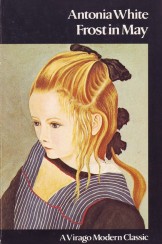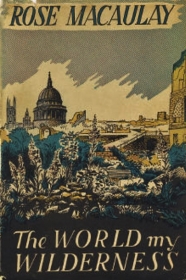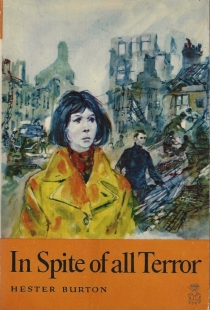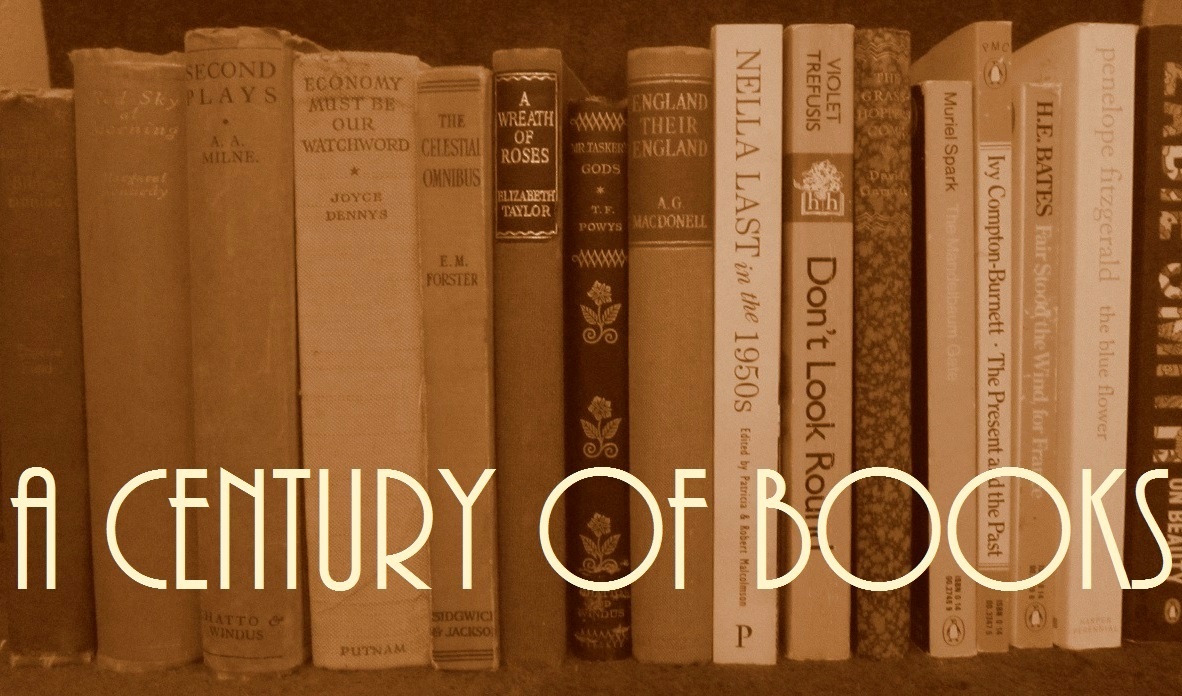I’ve just finished something of a mini-binge of World War II-era spy thrillers, with the first two of what would turn into a handsome list of espionage and suspense thrillers by Helen MacInnes.
Above Suspicion was the first, and published in 1941 in the opening moves of what was to become the prolonged agony of the Second Great War, its urgent and foreboding tone rocketed it to bestseller heights. MacInnes followed her first novel by another even more topically urgent and dark, Assignment in Brittany, in 1942.
Though definitely dated, these suspense novels are decidedly still very readable today, made even more enthralling by the fact that we know what happened in the years after, while MacInnes and her heroic characters are facing a tremendous and forbidding Great Unknown. I’m going to give brief sketches of both in two hundred word snapshots, if I can condense them so tightly – with the strong recommendation that you discover these for yourself if you feel that these might be your thing. These two novels are excellent examples of their genre, though highly dramatized and relying upon those inevitable unlikely coincidences and lucky breaks in order to bring them to a satisfactory conclusion. Though neither has an ending that is neatly rounded off; the settings and times don’t allow it.
I have read Above Suspicion numerous times through the years, but Assignment in Brittany was new to me, and I was pleased at how engaging both of these were, even though in the first I knew the plot inside and out, and the second I guessed at rather successfully all of the way through, except for the rather heartrending (but ultimately optimistic) twist at the very end.
Both books were immediate bestsellers, and remain very readable – and continually in print – almost seventy-five years after their first publication.

“Because of the acute shortage of regular book cloth under war-time rationing, this book is bound in ‘leatherette,’ a sturdy paper fabric especially designed for this purpose.”
Above Suspicion by Helen MacInnes ~ 1941. This edition: Triangle Books, 1944. Hardcover. 333 pages.
My rating: 8.5/10
Young Oxford University don Richard Myles and his wife Frances are recruited to travel to Europe during summer break in order to discover what has happened to a possibly-compromised chain of British secret service agents. The premise being that the two are so innocent-seeming as to be able to wander at will, from agent to agent, following the links as identified at each contact. In their travels they run in and out of numerous sinister encounters; the Nazis are very much on the ascendant and their evil shadow looms over the lands the Myles visit on their journeyings.

This dramatic vintage dust jacket illustration illustrates one of the peak moments of this suspense thriller, as the heroine is attacked by the Head Evil Nazi’s killer dog and is rescued by quick deployment of her husband’s handy-dandy sword-stick. Imminently distressing dispatch of the hound aside, isn’t this a gorgeous bit of graphic design?
A novel made most poignant by the time of writing; the last months of peacetime shadowed by foreboding clouds of war. The author draws upon personal experience in telling her tale, and it is an interesting combination of travelogue and suspense thriller, full of asides describing the scenes in which the action is set, and philosophical musings regarding the whys and wherefores of the imminent conflict. The German psyche is searchingly probed by a very British analyst – MacInnes in the guise of her heroic (and autobiographical) married couple – and found to be both blustering and chillingly focussed on military dominion.

I am fortunate enough to be the possessor of this handsomely dust-jacketed first American edition. An absolutely stellar example of vintage cover art. Wouldn’t this make an amazing wall poster?
Assignment in Brittany by Helen MacInnes ~ 1942. This edition: Little, Brown & Co., 1942. Hardcover. 373 pages.
My rating: 9/10
Martin Hearne is parachuted into Brittany, into the very forefront of the Nazi occupation, in the guise of his French body double, Bertrand Corlay. Many surprises await Hearne, not least of which is the discovery that his predecessor was less than forthcoming about some of his own activities before his evacuation to England via the Dunkirk debacle. For instance, his pre-marital arrangement with the neighbouring farmer’s daughter, Anne, and his estrangement from his invalid mother, who keeps strictly to her own rooms in the shared household. Who is beautiful and passionately forthcoming Elise? Why do the Nazi occupiers greet “Bertrand Corlay” with warm enthusiasm, while his fellow villagers hiss in cold disgust?
An escaping American journalist sheltering in the Corlay home sets off a string of complications, most notably a dramatic trip to the medieval monastic stronghold of Mont St. Michel, situated at the end of a causeway above tidal flats of quicksand. A return to the Corlay home finds Hearne confronted by steely-eyed Teutons who have discovered their collaborator is not what he seems, in so very many ways. Will Hearne make it back to England with his meticulously written notes and maps, as well as his new-found love?
Good dramatic stuff, rather nicely plotted for its type of thing, though with an exceedingly strong reliance on Hand of Coincidence. The evil Boche are given no ground, and the resident Bretons are depicted as cunning and stubborn survivors, insular to an astounding degree, but in the main resistant to their unwelcome occupiers by a combination of sullen non-cooperation and occasional acts of secret sabotage.
An engaging period thriller, written at the time it depicts, and so a valuable snapshot of the mood and details of its moment in time as well as a very readable diversion.
























The Houses in Between by Howard Spring
Posted in 1950s, Century of Books - 2014, Read in 2014, tagged Century of Books 2014, Social Commentary, Spring, Howard, The Houses In Between, Vintage Fiction, War on July 23, 2014| 13 Comments »
My rating: After some deliberation, I cannot honestly give this less than a 10/10. This ambitious novel certainly has some flaws, but the overall reading experience, to me at this point in my life, was utterly satisfying.
A week or so ago I posted a quick teaser about this novel, and I am happy to report that it more than fulfilled its promise. It took me quite a long time to work my way through it, both because of general busy-ness in my real life, and my reluctance to rush through the book. Fine print, thin pages, and rather intense content made it crucial to be able to really concentrate; it was not a particularly “easy” read, though I did find it completely engaging.
On her third birthday, May 1, 1851, young Sarah Rainborough visits the newly-opened Crystal Palace in London, and the experience so impresses her that it becomes her earliest vivid memory, to be referenced throughout the rest of her long life.
I am not going to share many more plot details than this, as the story was most rewarding to me as I read with no prior knowledge as to where it was all going to go, and there were some surprising developments.
Written in the first person as an autobiography, with Sarah starting to record her life in her later years and the tone very much one of “looking back”, there are of course many references to future events, interweaving Sarah’s past and present and going off into short tangents here and there. Sarah’s fictional life covers ninety-nine years of a history-rich century, and though as a member of the upper middle class our narrator is cushioned from the harshest realities of her time, she is fully aware – at least in retrospect – of what is going on all around her.
The strongest part of the book to my mind was the portion regarding the Great War. The author, using his character’s voice, is bitterly sincere in condemnation of the brutal destruction of an entire generation of the best and brightest of England’s – and Europe’s – young men, and the impact of their loss on the structure of society as a whole, and on the families and individuals left behind.
Part social commentary and part good old-fashioned family drama – Sarah’s personal life and the lives of her family members are chock full of incident, some spilling over into positive melodrama – the book is by and large very well paced and beautifully balanced between fiction and history.
Here is the author’s foreword, which tells of his intentions. I must say that I thought he pulled it off rather well.
Howard Spring made a commendably good job of voicing his narrator; occasionally it felt a tiny bit forced, but in general he drew me in and kept me engaged. The latter chapters, covering Sarah’s extreme old age, were particularly believable, as the narrator is shown to be letting herself go a bit, both in her recording of the current phase of her life, and in her relationships to the people around her, as she deliberately eliminates strong emotional feelings regarding her descendants and looks more and more inward, preserving her energies for herself.
An author whom I shall be exploring in the future. I very much liked what he did here, though no doubt some of the appeal of this book is in that it describes the long life of a rather ordinary woman, and I am myself in a reflective mood regarding the life of my own mother, who died just over a month ago at the venerable age of eighty-nine, a decade less than our fictional Sarah’s, but still impressive, when one considers the societal changes that occurred in her (my mother’s) life as well.
Well done.
For more reviews:
The Goodreads page has several succinct and accurate reviews by readers.
Reading 1900-1950 has a detailed review, with excerpts, as well as links to reviews of several other of the author’s novels.
Read Full Post »